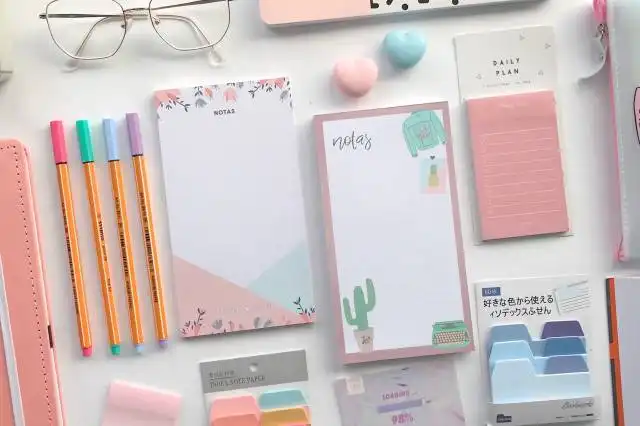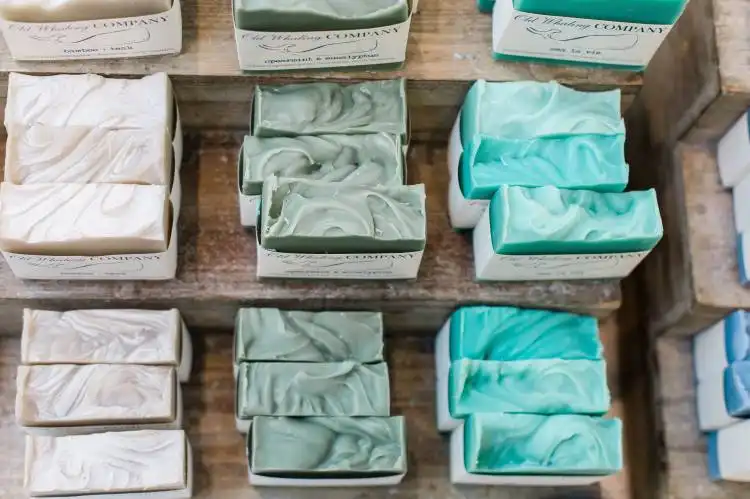Start a Pottery Business
Shape Your Dreams: Turn Clay into a Profitable Enterprise
| Updated


POTTERY BUSINESS
Embrace your inner artisan with a pottery business, a sanctuary where clay and creativity converge. As an enterprise, it entails creating, selling, and even teaching the art of pottery. You'll find yourself crafting pots, vases, plates, and other ceramic wonders, turning a lump of earth into objects of beauty and utility. You don't just sell pottery. You sell pieces of art, moments of inspiration, and the rewarding experience of molding one's own masterpiece.
Jump to Business Plan
RELATED BUSINESS IDEAS
Browse ALL Arts & Crafts Business Ideas
Discover Your Perfect Domain
Unlock the door to your online success with our hand-picked selection of premium domain names. Whether you're starting a new venture or rebranding an existing one, the right domain can set the tone for your digital presence. Browse through our curated list, each with its unique potential to enhance your brand's visibility and credibility.
POTTERY MINI BUSINESS PLAN
This a quick reality check to help you identify the strengths and weaknesses of your business concept before you dive in.
Business Information: Pottery business
Expected Percent Margin:
- Gross Margin: Approx. 70-80%
- Net Profit Margin: Approx. 20-30%
Earnings Expectations:
- Daily Earnings: $150 - $300
- Weekly Earnings: $1,050 - $2,100
- Monthly Earnings: $4,500 - $9,000
- Annual Earnings: $54,000 - $108,000
Actions to Hit Those Numbers:
Inventory Management:
- Initial Investment: Approx. $10,000 to cover pots, glazes, kilns, clay, and other necessary materials.
- Supplier Relations: Establishing strong connections with reliable clay and pottery equipment suppliers.
Marketing and Customer Acquisition:
- Social Media: Regularly share photos and videos of your pottery on platforms like Instagram, where visual products thrive.
- Craft Fairs and Markets: Attend local arts and crafts fairs; they're a great way to meet potential customers and make sales.
Sales and Customer Experience:
- Staffing: Depending on the size of your company, you may need 1-2 employees to assist in production or customer service.
- Product Range: Develop a wide range of products to cater to different customer preferences and budgets.
Cost Control:
- Studio Space: Rent or buy a space that can house your pottery wheel(s), kiln(s), and pottery. Aim to keep this cost below 10% of your expected sales.
- Utilities and Maintenance: Normal utilities and the specific needs of running a kiln (gas or electricity) should be factored in.
Business Operations:
- Working Hours: Time to create works, manage business operations, and sell products (if you choose to run a storefront or attend markets) can vary widely.
- Sales Targets: Aim to sell a fixed amount of pottery items daily to keep the business profitable.
These estimates are generalized and actual values can vary based on the specific pottery niche, location, economic conditions, and individual business strategies. As always, it is advisable to consult with a financial advisor for personalized advice.
NOT WHAT YOU HAD IN MIND? Here are more ideas



Browse ALL Arts & Crafts Business Ideas
Grab Your Business Website Name
Before you get caught up in the whirlwind of setting up your business, invest in a domain name. It's a small but significant step that lays the foundation for your brand and makes it easier for customers to find and trust you. Just like you wouldn't build a house without securing the land first, don't build a business without securing your domain name.
"Why? Can't that wait?" Here's why it shouldn't
Step 1: Determine if a Pottery Business is Right for You
Breakdown of Startup Expenses
When starting a pottery business, it is important to consider the startup expenses that will be necessary. These expenses can include the cost of materials, tools, and equipment needed to create pottery, as well as any fees associated with registering the business. Additionally, it is important to consider the cost of renting or purchasing a space to work in, as well as the cost of any marketing materials or advertising that may be necessary. It is also important to consider the cost of any permits or licenses that may be required to legally operate a pottery business.
Breakdown of Ongoing Expenses
When starting a pottery business, it is important to consider the ongoing expenses that will be necessary. These expenses can include the cost of materials, tools, and equipment needed to create pottery, as well as the cost of any marketing materials or advertising that may be necessary. Additionally, it is important to consider the cost of renting or purchasing a space to work in, as well as any fees associated with registering the business. It is also important to consider the cost of any permits or licenses that may be required to legally operate a pottery business.
Examples of Ways to Make Money
When starting a pottery business, it is important to consider the various ways to make money. These can include selling pottery directly to customers, selling pottery at craft fairs or markets, selling pottery online, or even teaching pottery classes. Additionally, pottery businesses can also make money by creating custom pieces for customers, or by creating pieces for businesses or organizations. It is also important to consider the potential for collaborations with other businesses or organizations, as well as the potential for selling pottery wholesale to retailers.
Step 2: Name the Business
When it comes to naming a business, it is important to consider the potential customers and what they might be looking for. It is also important to consider the type of business and the services that will be offered. Additionally, it is important to make sure the name is easy to remember and pronounce. It is also important to make sure the name is not already taken by another business. Researching the local area and the business's target market can help in the process of coming up with a suitable name. Additionally, brainstorming with friends and family can help to come up with creative ideas. Once a name has been chosen, it is important to make sure to check the availability of the name with the local government or business registration office.
Step 3: Create a Business Plan
Creating a business plan is an important step in the process of starting a pottery business. The business plan should include a detailed description of the business, including the products and services that will be offered, the target market, and the competitive landscape. It should also include a financial plan, which should include a budget, projected income, and estimated expenses. Additionally, the plan should include a marketing strategy, which should include a plan for advertising and promotion, as well as a plan for customer service. Finally, the plan should include a plan for operations, which should include a plan for production, inventory management, and distribution.
Tips for Creating a Business Plan
When creating a business plan for a pottery business, it is important to be thorough and detailed. It is also important to be realistic when creating the financial plan, as this will help to ensure that the business is viable. Additionally, it is important to research the competitive landscape and target market, as this will help to ensure that the business is well-positioned to succeed. Finally, it is important to be creative when creating the marketing strategy, as this will help to ensure that the business stands out from the competition.
Step 4: Find a Location
When deciding on a location for a pottery business, there are several factors to consider. First, the location should be easily accessible for customers. Second, the space should be large enough to accommodate the necessary equipment and supplies. Third, the space should be zoned for commercial use. Fourth, the space should be affordable. Finally, the space should have adequate lighting and ventilation.
Types of Locations
When it comes to finding a location for a pottery business, there are several options. One option is to rent a space in a local shopping center or mall. This is a great option for those who want to have a retail presence. Another option is to rent a space in an industrial park or warehouse. This is a great option for those who want to focus on production and don't need a retail presence. Finally, some pottery businesses choose to operate out of their own home. This is a great option for those who want to keep overhead costs low.
Step 5: Obtain Necessary Licenses and Permits
In order to legally operate a pottery business, it is important to obtain the necessary licenses and permits. Depending on the location, this may include a business license, a seller's permit, and a zoning permit. It is important to research the specific requirements for the area in which the business is located. Additionally, it is important to make sure that all necessary permits are obtained before beginning operations.
Research Local Requirements
Before obtaining any licenses or permits, it is important to research the specific requirements for the area in which the business is located. This may include researching the local zoning laws, as well as any other applicable laws or regulations. Additionally, it is important to research any fees associated with obtaining the necessary licenses and permits.
Obtain Necessary Licenses
Once the necessary research has been completed, the next step is to obtain the necessary licenses and permits. This may include a business license, a seller's permit, and a zoning permit. Depending on the location, there may be additional licenses or permits that are required. It is important to make sure that all necessary licenses and permits are obtained before beginning operations.
Keep Records of Licenses and Permits
Once the necessary licenses and permits have been obtained, it is important to keep records of them. This includes keeping copies of all licenses and permits, as well as any other documents that may be required. Additionally, it is important to keep track of any fees associated with the licenses and permits. This will help to ensure that the business is in compliance with all applicable laws and regulations.
Step 6: Purchase Equipment
Pottery businesses require a variety of equipment and tools to create and sell products. This includes items such as a pottery wheel, kiln, clay, glazes, and tools such as sponges, ribbons, and knives. Additionally, it is important to have a workspace that is large enough to accommodate the equipment and supplies. It is also important to have a space to store finished products.
Cost of Equipment
The cost of equipment and supplies can vary greatly depending on the type of pottery business. For example, a pottery wheel can range from a few hundred dollars to several thousand dollars. Additionally, a kiln can range from a few hundred dollars to several thousand dollars. Other supplies such as clay, glazes, and tools can range from a few dollars to several hundred dollars.
Where to Purchase Equipment
Pottery equipment and supplies can be purchased from a variety of sources. This includes local pottery stores, online retailers, and craft stores. Additionally, some pottery businesses may choose to purchase used equipment from other pottery businesses.
Financing Options
For those who are unable to purchase the necessary equipment and supplies upfront, there are several financing options available. This includes traditional loans from banks and credit unions, as well as online lenders. Additionally, some pottery businesses may choose to apply for grants or other forms of funding.
Step 7: Market the Business
Once the business is up and running, it is important to get the word out about the pottery business. There are a variety of ways to market the business, such as:
- Creating a website and social media accounts to showcase the pottery and advertise the business.
- Participating in local events and craft fairs to show off the pottery and meet potential customers.
- Advertising in local newspapers and magazines.
- Networking with other pottery businesses and local art galleries.
Tips for Marketing
When marketing the business, it is important to keep the following tips in mind:
- Focus on the unique aspects of the pottery business to stand out from the competition.
- Utilize the power of word-of-mouth by asking satisfied customers to refer friends and family.
- Offer discounts and promotions to attract new customers.
- Develop relationships with local businesses to cross-promote each other’s services.
- Take advantage of free marketing opportunities such as blogging and posting on social media.
Step 8: Set Prices
When setting prices for pottery products, it is important to consider the cost of materials, labor, and overhead. Additionally, it is important to consider the market rate for similar products and the potential customer base. It is also important to consider the cost of shipping and packaging, as well as any taxes or fees associated with selling the products.
Pricing Strategies
When pricing pottery products, it is important to consider the cost of materials, labor, and overhead. Additionally, it is important to consider the market rate for similar products and the potential customer base. It is also important to consider the cost of shipping and packaging, as well as any taxes or fees associated with selling the products. Additionally, it is important to consider pricing strategies such as setting a base price and then offering discounts for bulk orders, or offering a tiered pricing structure based on the size or complexity of the product. Additionally, it is important to consider offering discounts for returning customers or offering free shipping or other incentives to attract new customers.
Advertising Prices
Once prices have been set, it is important to advertise them in a way that is clear and easy to understand. This can be done through online listings, in-store displays, or through promotional materials. Additionally, it is important to make sure that customers are aware of any discounts or incentives that are available. Additionally, it is important to make sure that customers are aware of any taxes or fees that may be associated with the purchase.
Adjusting Prices
It is important to be flexible when it comes to pricing and to be willing to adjust prices as needed. This may mean offering discounts or incentives to attract new customers or adjusting prices to reflect changes in the market. Additionally, it is important to be aware of any changes in the cost of materials, labor, or overhead and to adjust prices accordingly. Additionally, it is important to be aware of any changes in the market rate for similar products and to adjust prices accordingly.
Step 9: Keep Records
Keeping records is an important part of running any business, and a pottery business is no different. It is important to keep accurate records of all financial transactions, including sales, expenses, and taxes. It is also important to keep track of inventory, customer orders, and any other relevant information.
Why Records Are Important
Records are important for a pottery business because they provide a clear picture of the business’s financial health. They can also be used to track progress and make sure the business is meeting its goals. Additionally, records can be used to help with tax preparation and filing. Finally, records can help the business owner make informed decisions about the future of the business.
What Records Should Be Kept
The types of records that should be kept for a pottery business include financial records, such as income and expenses, as well as customer orders and inventory. It is also important to keep track of any taxes that need to be paid, as well as any licenses or permits that are required.
How to Keep Records
There are several ways to keep records for a pottery business. One option is to use a spreadsheet program, such as Microsoft Excel, to track all financial information. Another option is to use an accounting software program, such as QuickBooks, to keep track of all financial transactions. Additionally, it is important to keep hard copies of all records in case of an audit.
EXPLORE MORE CATEGORIES
Browse ALL Business Idea Categories
TAKE THE NEXT STEPS









